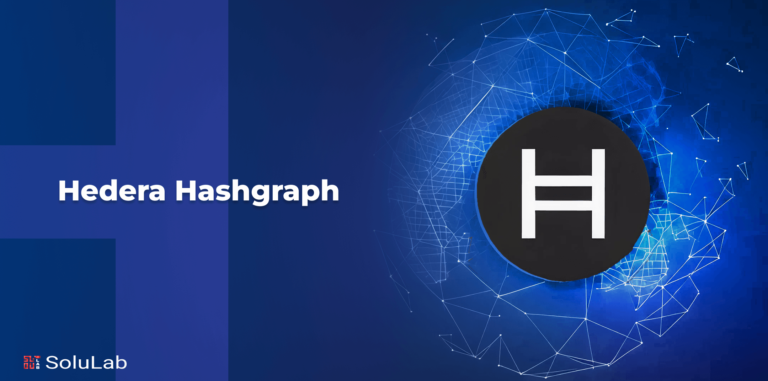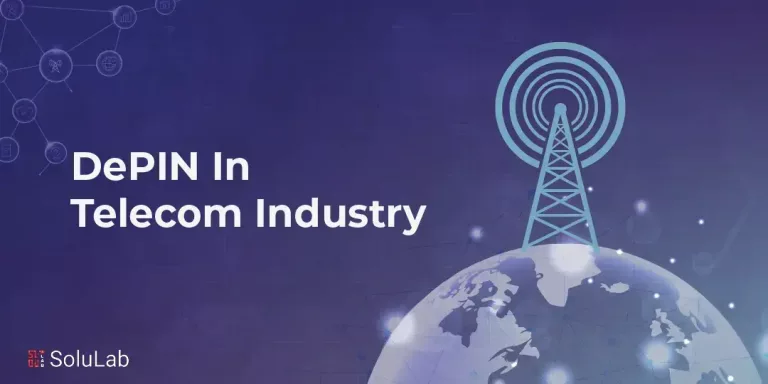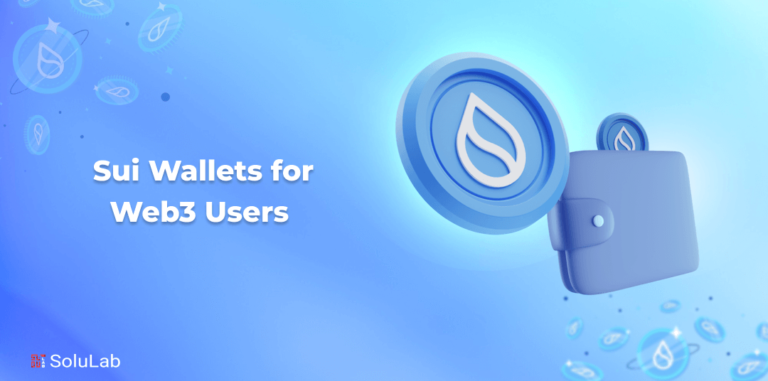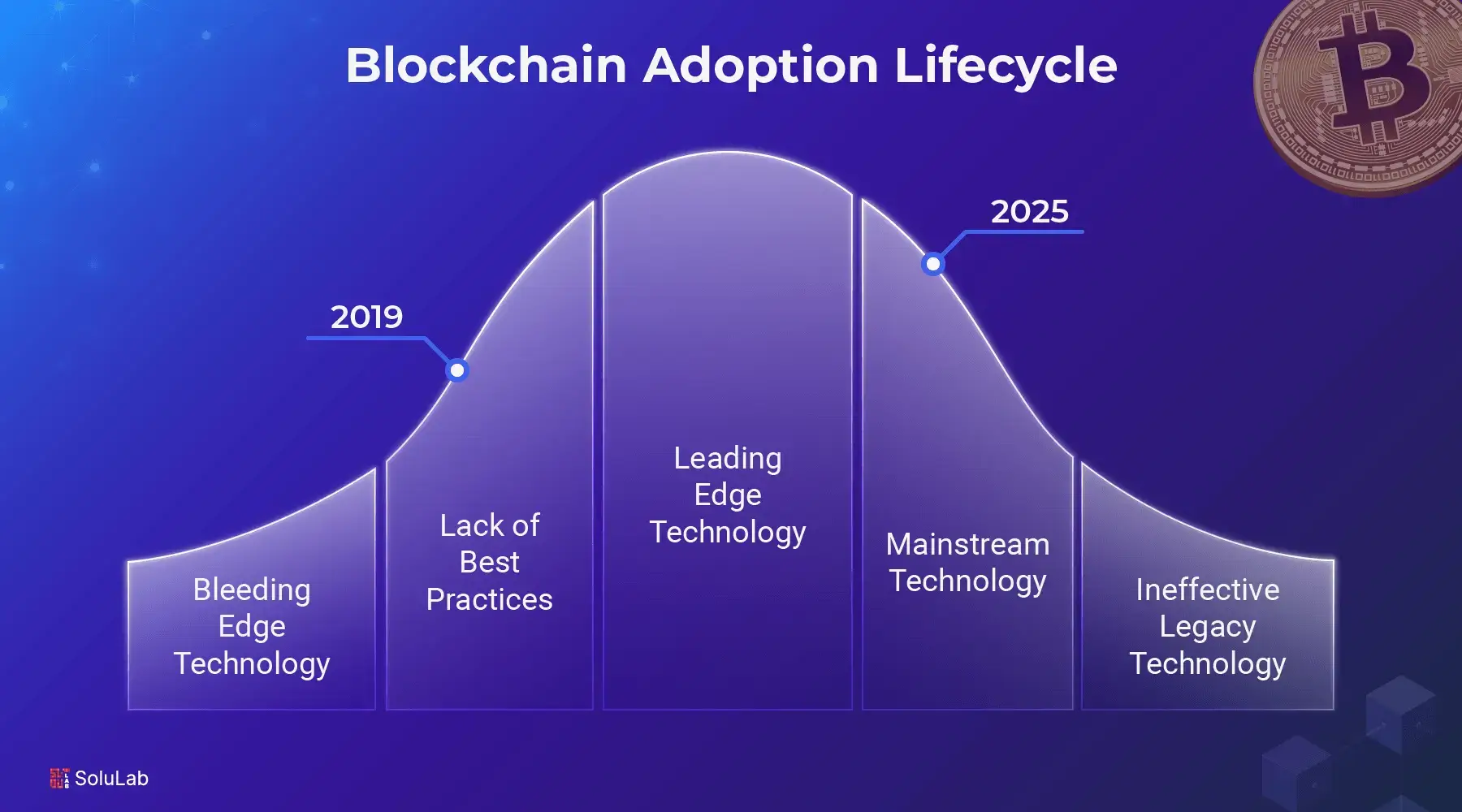
By 2025, enterprises will not only be investigating blockchain but also insisting on more intelligent, interconnected platforms. As enterprises progressively utilize decentralized technology, a significant difficulty will arise: How can these isolated blockchains efficiently interact with one another? This is where blockchain interoperability becomes relevant.
Blockchain interoperability solutions enable several blockchains to transfer data and assets independently of centralized middlemen. This capability of communicating effortlessly across platforms enhances productivity and facilitates creative corporate applications in supply chain, finance, and healthcare.
This blog will examine how blockchain interoperability is set to transform enterprise adoption in 2025. We will explore the real-world impacts of interoperability on decentralized ecosystems, from facilitating frictionless data interchange to enhancing cooperation.
What is Blockchain Interoperability?
Blockchain interoperability means that different blockchain networks can talk to each other, share data, and work together without any problems. When there are many blockchains, each with its own protocols, consensus methods, and use cases, interoperability makes sure that these networks don’t stay separate but work together as a whole.
In the next few years, the blockchain interoperability market is expected to grow at a rate of 28.30% per year, rising from USD 0.83 billion in 2025 to USD 7.90 billion by 2034. There was also a blockchain interoperability market that was worth USD 0.65 billion in 2024.
Earlier, blockchain systems worked alone, with a limited network. Businesses that wanted to use multi-chain plans or add decentralized systems to current platforms had a hard time. Compatibility is important as it lets you exchange money, share smart contracts, and control your name or assets in a unified way across multiple networks.
For example, Chainlink’s Cross-Chain Interoperability Protocol (CCIP) lets different blockchains talk to each other in a safe and scalable way. These methods make it easier for businesses to work together and open up new services, such as multi-chain DeFi platforms, tracking the global supply chain, and making payments across borders.
Why Blockchain Interoperability Matters for Enterprises?
Blockchain interoperability is not just a technological benefit for businesses; it is also a strategic need. Maximizing efficiency, lowering costs, and preserving a competitive advantage depend on integrating many systems and chains as companies use blockchain technologies across departments and worldwide operations. Cross-chain interoperability, therefore, helps to link otherwise separated systems into a coherent digital infrastructure.
Here’s why enterprises need interoperability:
- Seamless Data Exchange: Interoperability lets enterprises move data across many blockchain systems, therefore ensuring consistent and coordinated information flow across platforms.
- Multi-Chain Operations: Enterprises sometimes use many blockchains for different purposes—supply chain, finance, identification, etc., even if they are related.
- Enhanced Efficiency: Cross-chain interoperability simplifies operations and speeds decision-making by lowering the requirement for manual reconciliation and outside intermediaries.
- Scalable Innovation: Interoperability gives the flexibility to embrace new chains and technologies as they develop without redesigning current infrastructure, hence facilitating long-term scalability.
- Improved User Experience: Whether they are shared loyalty programs or cross-chain payments, interoperability helps consumers, partners, and stakeholders to have better interactions.
- Future-Proofing Investments: Blockchain standards may change, but interoperability ensures that business solutions stay flexible and relevant, therefore safeguarding long-term technological investments.
How Blockchain Interoperability Works?
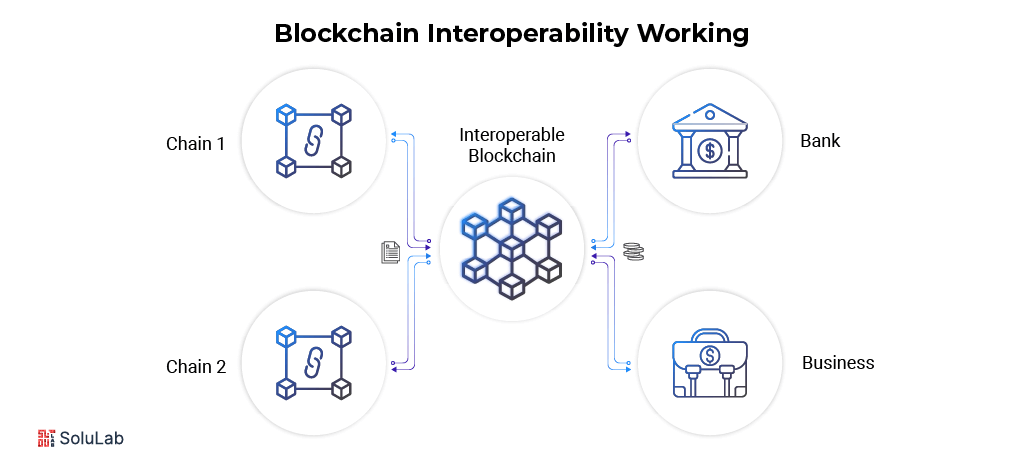
Blockchain interoperability facilitates communication and information exchange among diverse blockchain networks, each with distinct rules, consensus methods, and data formats, without the need for centralized intermediaries. This intercommunication is essential in corporate settings where many blockchains serve distinct purposes, and cohesive data flow is imperative for efficient operations.
This approach fundamentally relies on distributed ledger technology (DLT), which offers safe data recording and maintenance over a decentralized network. However, because each blockchain functions autonomously, interoperability layers or protocols are required to connect these distinct ledgers.
This is the normal operation of interoperability within blockchain ecosystems:
- Relays and Bridges: These are methods based on interoperable smart contracts that enable one blockchain to oversee and authenticate data from another. Relays function as intermediaries, transmitting transaction verifications between chains in a trustless manner.
- Atomic Swaps: A technique that facilitates direct P2P transactions of assets across disparate blockchains without the necessity of a centralized exchange. This is crucial for DeFi interoperability, enabling users to exchange assets across decentralized platforms such as Ethereum and Binance Smart Chain.
- Middleware Protocols: Interoperability solutions like Polkadot, Cosmos, and Hyperledger interoperability frameworks offer a unified layer that links several blockchains. These function as a universal translator, facilitating smooth communication and value transfer across enterprise and public blockchains.
- Inter-Blockchain collaboration (IBC): A protocol utilized by Cosmos, IBC establishes standards for inter-blockchain messaging, facilitating secure and organized collaboration.
- APIs and SDKs: In corporate applications, APIs are frequently utilized to facilitate interaction between legacy systems and blockchain networks. These technologies facilitate the standardization of interoperability without necessitating extensive protocol-level integration.
- Oracles: External data feeds, such as Chainlink, provide the utilization of real-world data or outputs from one blockchain by another to initiate smart contract executions, hence augmenting the functionality of interoperable systems.
Approaches to Achieve Blockchain Interoperability

Today, many methods and tools can be used to make blockchain systems work with each other. This can be done in two ways: directly by changing the infrastructures of blockchains so that transactions follow the same business logic across multiple networks; or indirectly by using external interoperability protocols that connect blockchains securely and make it possible for data, tokens, and messages to be sent between them. Here are some of the main methods that were used to make this feature work.
-
Cross-Authentication
With cross-authentication, a separate, trusted network acts as a go-between for blockchain networks to check transactions and shared data between chains. Third-party blockchain tools, such as trust methods, token links, or sidechains, are often used to handle this.
In a notary-based model, the transaction is approved by a notary on one blockchain, who then sends proof of this to the target chain. Single-signature and multi-signature notaries are the two types of notaries that are used in these kinds of programs. This makes the system more trustworthy and resilient.
-
Oracles
Oracles are very important for DeFi interoperability because they connect blockchain systems to outside data sources and even other blockchains. As trusted messengers, they send data from the real world to smart contracts or events that happen on the blockchain to other blockchain networks.
For instance, if two people use a smart contract to bet on a sports game, the smart contract itself can’t see how the game turns out. Then, oracles come in—they get the match result from a trusted outside source and send it safely to the smart contract, setting off the right outcome. In this way, oracles are the building blocks of connecting blockchains and off-chain systems.
-
API Gateways
API gateways act as software that makes it easier for blockchain protocols and external apps to talk to each other. They basically act as interpreters, taking requests from outside the blockchain network, like transaction directions or data questions, and putting them in the right shape for that network.
When the gateway gets a request, it figures out which blockchain it should send the command to and changes the style of the command so that it works with that network’s protocol. These interfaces are very important for letting global ledgers and off-chain business apps talk to each other in real time.
-
Cross-Chain Solutions
Cross-chain interoperability solutions set up a way for blockchain apps to talk to each other so that they can share data, coins, and contract calls across different blockchain platforms. These solutions create a standard interface that can be used across different networks. They do this by using token links and built-in Oracle services to make exchanges safe and reliable.
Cosmos, Polkadot, Chainlink, and Wanchain are just a few of the new message and transfer platforms that have made it easier for assets and information to move between chains. At the heart of getting efficient and useful blockchain collaboration are these options.
Related: What is Cross-Chain Compatibility?
-
Enterprise-Grade Solutions
Enterprise blockchains are usually private and require permissions to access, unlike public chains like Ethereum or Bitcoin. This makes it harder for them to connect to other networks. Interoperability, on the other hand, lets these companies use the blockchain technology that is already in place, so they don’t have to build new systems from scratch.
Also, enterprise-level sharing makes it easier for companies to share data safely and quickly. This is especially important in sensitive fields like healthcare and finance. When you use enterprise-grade cross-chain interoperability, you can be sure of strong privacy, data control, and compliance, and you can still work together easily with people from different environments.
The Future of Blockchain Interoperability in Enterprise Adoption
As 2025 goes on and beyond, blockchain interoperability is likely to become an essential requirement. Multi-chain methods are being used more and more by businesses to improve processes across departments, areas, and sectors. Finance, supply chains, healthcare, and the government are all realizing they need blockchain communities that are all linked and can talk to each other easily.
Making open, safe, and accepted standards that allow people to work together across chains without losing privacy, compliance, or performance is what the future holds for blockchain interoperability. Companies that want to use blockchain in the long term will need to work with an experienced enterprise blockchain development company.
These companies offer both blockchain development services and consultation on how to set up scalable, open infrastructure that fits the modern needs. Businesses that invest early in these systems will gain a competitive edge as interoperability improves. This is because they will be able to use real-time automation, cross-platform data access, and new income models powered by connected blockchain networks.
The Bottom Line
Blockchain interoperability is no longer an idea from the future; it’s a business must. As enterprises move from test projects to full-scale blockchain integration, their ability to connect to each other over various networks will determine how well their digital transformation efforts work. This builds the foundation for better, more connected processes in many fields.
SoluLab, as a leading enterprise blockchain development company, helps businesses adapt to this change by providing custom blockchain solutions that put growth and connectivity first. Our work on the OBORTECH Smart Hub project is a great example of this because it uses Blockchain-as-a-Service (BaaS) to make things run more smoothly. This latest technology platform lets businesses create decentralized apps using third-party cloud infrastructure.
Now is the time to act if your business is looking into blockchain or wants to expand current projects with solutions that work with each other. To find out how SoluLab can help you build cross-chain skills while discovering the real value of using blockchain in your business, get in touch with us!
FAQs
1. How is blockchain interoperability different from traditional system integration?
Traditional system integration connects centralized databases or platforms using middleware. Blockchain interoperability, on the other hand, enables decentralized networks—often with different consensus mechanisms and protocols—to securely share data and interact without intermediaries.
2. Can blockchain interoperability support compliance with industry regulations?
Yes, when designed with governance in mind, interoperable blockchain development services can enhance regulatory compliance. They allow traceable, auditable data exchange across networks, which is particularly useful in industries like finance and healthcare that demand strict compliance protocols.
3. How does blockchain interoperability influence data privacy for enterprises?
Interoperability solutions can be designed to maintain strict data privacy controls by enabling selective data sharing and encryption. Enterprises can retain sensitive information on private chains while still interacting with public or consortium networks as needed.
4. Is blockchain interoperability only relevant for large enterprises?
Not at all. While large organizations often lead adoption, small and mid-sized businesses can also benefit by integrating with larger ecosystems, automating transactions, and accessing shared data and services without rebuilding infrastructure from scratch.
5. How does blockchain interoperability affect supply chain transparency?
It enhances supply chain transparency by enabling real-time data sharing between different stakeholders, even if they use different blockchain platforms. This ensures consistent tracking, verification, and visibility across the entire supply chain network.




